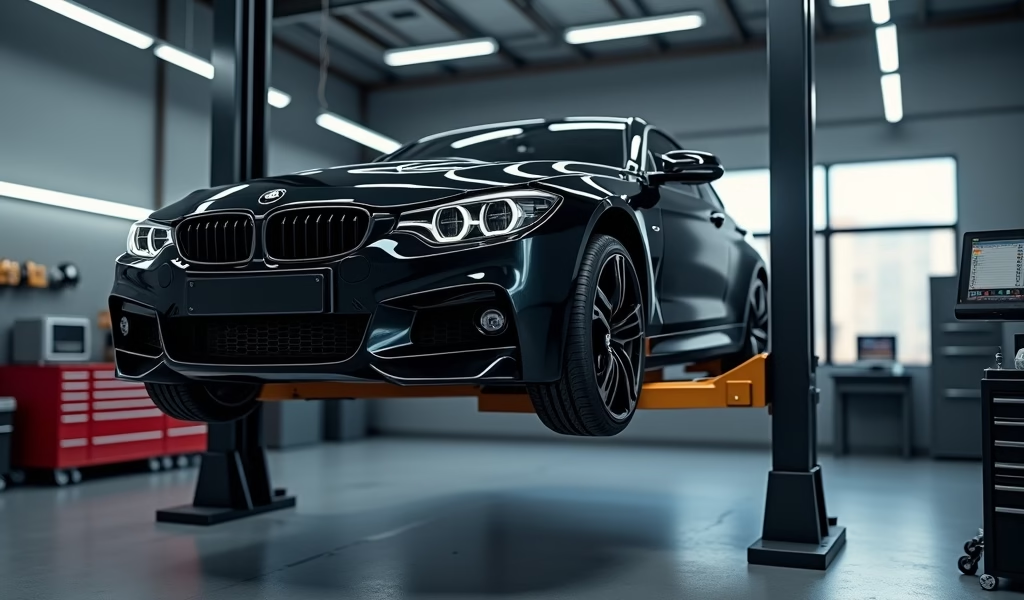Overview
Electronic Brakeforce Distribution (EBD) is a crucial safety technology that dynamically adjusts braking pressure to each wheel individually, preventing skids and significantly reducing stopping distances by constantly monitoring wheel rotation, vehicle load, and driving conditions. The article explains how EBD works alongside ABS, details troubleshooting signs, maintenance tips, and emphasizes its importance as an “invisible guardian” that seamlessly enhances vehicle safety without driver awareness.
Table of Contents
- Understanding Electronic Brakeforce Distribution: Your Car’s Hidden Safety Hero
- The Evolution of Braking Systems: From Basic to Brilliant
- How Electronic Brakeforce Distribution Works: The Mechanics Behind the Magic
- The Real-World Benefits of EBD for Everyday Drivers
- EBD vs. ABS: Partners in Safety
- Troubleshooting EBD Issues: Know When Something’s Wrong
- Maintaining Your EBD System: Simple Tips for Longevity
- The Future of Braking Technology: What’s Coming Next
- Conclusion: Appreciating the Invisible Guardian
- Frequently Asked Questions
Understanding Electronic Brakeforce Distribution: Your Car’s Hidden Safety Hero
Ever hit the brakes hard and noticed your car stays perfectly straight instead of skidding wildly? That’s Electronic Brakeforce Distribution (EBD) quietly saving the day. As a mechanic with 15 years under my belt, I can tell you this technology prevents countless accidents daily, yet most drivers have no idea it exists.
Electronic brakeforce distribution is that unsung hero working behind the scenes every time you press your brake pedal. It’s the smart technology that instantly decides how much braking power each wheel needs based on road conditions, vehicle load, and the intensity of your braking. For the 1.5 million drivers who’ll benefit from understanding this system, knowing how EBD works might just change how you think about your vehicle’s safety capabilities.
In the simplest terms, EBD is your braking system’s brain. While traditional braking systems apply roughly equal force to all wheels, EBD dynamically adjusts the braking pressure to each wheel individually. This prevents skidding, maintains directional stability, and significantly reduces stopping distances – especially during emergency situations.
Let’s dive into the nuts and bolts of this remarkable system that’s been silently protecting you on every drive.
The Evolution of Braking Systems: From Basic to Brilliant
To appreciate EBD, you need to understand where braking technology started. Back in the automotive stone age (think 1970s and earlier), cars used simple proportioning valves – mechanical devices that reduced brake pressure to the rear wheels by a fixed amount. These systems were crude but necessary because of a fundamental physics problem.
When you hit the brakes, weight transfers forward, lightening the rear of the vehicle. With less weight pressing them down, rear wheels require less braking force before locking up. Those old proportioning valves provided a one-size-fits-most solution that worked okay under normal conditions but fell short during emergency stops or when carrying heavy loads.
The 1980s and early 1990s brought us Anti-lock Braking Systems (ABS), which prevented wheel lock-up by rapidly pulsing brake pressure. This was revolutionary, but ABS pump motors operate mainly to prevent lockup rather than optimizing brake force distribution.
Enter Electronic Brakeforce Distribution in the mid-1990s. Rather than using fixed mechanical proportions, EBD constantly monitors each wheel’s rotation speed, vehicle load, and deceleration rate. It then makes split-second adjustments to brake pressure at each wheel individually. This dynamic approach adapts to changing conditions in real-time, resulting in dramatically improved braking performance under all conditions.

How Electronic Brakeforce Distribution Works: The Mechanics Behind the Magic
So what’s actually happening under your hood when EBD kicks in? Let’s break it down in plain English.
At the heart of any EBD system is a network of sensors monitoring your vehicle’s behavior. Wheel speed sensors (the same ones used by your ABS system) track how fast each wheel is rotating. These sensors detect when a wheel starts to slow down too quickly compared to the others – an early warning sign of impending lockup.
Additional sensors monitor vehicle load, deceleration rate, and even steering input. All this data feeds into the EBD control module – essentially a specialized computer that makes up to 100 calculations per second.
When you press the brake pedal, brake system hydraulic pressure increases throughout the system. Here’s where EBD gets clever. Instead of applying equal pressure to all wheels, the control module uses solenoid valves to precisely regulate pressure to each wheel individually.
Let’s say you’re carrying heavy luggage in your trunk. The EBD system detects the increased rear weight and automatically adjusts to apply more brake force to the rear wheels than it would if the car were empty. Or perhaps you’re braking hard while turning – EBD will reduce pressure to the inside rear wheel to prevent it from locking up.
This continuous adjustment happens faster than you can blink. The wheel speed sensor air gap must be precisely calibrated to ensure accurate readings, as even tiny measurement errors could affect system performance.
What’s most impressive is how seamlessly all this happens. Unlike ABS, which produces a noticeable pedal pulsation when activated, EBD operates silently and smoothly. You’ll never feel it working – you’ll just notice your car stops reliably and predictably, even in challenging situations.
The Real-World Benefits of EBD for Everyday Drivers
The technical aspects of EBD are fascinating, but what really matters is how it helps you on the road. Here’s where the rubber meets the road (pun absolutely intended):
- Shorter Stopping Distances: By optimizing brake force at each wheel, EBD can reduce stopping distances by up to 20% compared to vehicles without it – particularly in emergency situations or on slippery surfaces.
- Enhanced Vehicle Stability: When braking hard without EBD, rear wheels might lock up first, causing the back end to swing around (oversteer). EBD prevents this dangerous situation by maintaining proper brake balance.
- Load Adaptability: Whether you’re driving solo or with a car full of passengers and luggage, EBD automatically compensates for the changed weight distribution.
- Reduced Tire Wear: By preventing premature wheel lockup, EBD helps maintain even tire wear, potentially extending tire life.
- Improved Confidence: The predictable, stable braking provided by EBD allows drivers to respond more effectively in emergency situations without fighting to maintain control.
A study by the Insurance Institute for Highway Safety found that vehicles equipped with EBD and ABS showed a 35% reduction in multi-vehicle crashes compared to those with no electronic braking assistance. That’s not just impressive – it’s lifesaving.
I’ve seen the difference firsthand when testing identical vehicles with and without EBD. The stability and predictability offered by EBD-equipped vehicles make emergency maneuvers significantly easier for the average driver to execute safely.
EBD vs. ABS: Partners in Safety
One question I frequently get in my shop: “What’s the difference between EBD and ABS?” It’s a great question since they’re closely related yet serve different functions.
Think of ABS as the emergency backup system. It kicks in only when a wheel is about to lock up, rapidly pulsing the brakes to prevent skidding. You’ll feel ABS working through brake pedal vibration and a characteristic “chattering” sound during hard stops.
EBD, meanwhile, works proactively and continuously. It distributes braking force optimally from the moment you touch the brake pedal, helping prevent the conditions that would trigger ABS in the first place. You won’t feel it working – it’s smooth and silent.
In modern vehicles, these systems work as partners. EBD handles brake distribution during normal and moderate braking, while ABS stands ready to intervene if a wheel still approaches lockup despite EBD’s efforts. It’s like having both a tactician and an emergency responder looking after your braking system.
According to NHTSA research, the combination of these technologies significantly reduces the likelihood of loss of control during emergency maneuvers. Most new vehicles now come with both systems standard, working together seamlessly under the broader umbrella of Electronic Stability Control (ESC).

Troubleshooting EBD Issues: Know When Something’s Wrong
Even the best technology occasionally needs attention, and EBD is no exception. As a mechanic, I’ve seen my share of EBD issues. Here are the warning signs you should never ignore:
- Warning Lights: The most obvious indicator is an illuminated ABS or brake warning light. Since EBD is typically integrated with the ABS system, these warning lights often signal EBD problems as well.
- Uneven Braking: If your vehicle pulls to one side during braking, the EBD system may not be distributing brake force properly.
- Unusual Pedal Feel: A soft or pulsating brake pedal when you’re not braking hard could indicate issues with the hydraulic control unit that manages EBD functions.
- Extended Stopping Distances: If your vehicle suddenly requires more distance to stop than usual, the EBD system might be operating in a reduced functionality mode or not at all.
- Stability Issues: Unusual rear-end looseness during braking could mean EBD isn’t properly controlling rear brake pressure.
What causes these issues? The most common culprits I see in my shop include:
- Faulty wheel speed sensors
- Damaged sensor rings (tone rings)
- Electrical issues in the control module
- Hydraulic control unit problems
- Low brake fluid levels
If you notice any warning signs, don’t procrastinate. Modern braking systems are complex, and problems can cascade if left unaddressed. A qualified mechanic can connect a diagnostic scanner that reads trouble codes from the ABS/EBD control module, pinpointing the exact issue.
Maintaining Your EBD System: Simple Tips for Longevity
Good news: EBD systems generally don’t require specific maintenance beyond what you’d do for your regular braking system. However, there are some proactive steps worth taking:
- Regular Brake Fluid Changes: Fresh brake fluid is crucial for proper EBD function. Have it changed every 2-3 years as recommended by automotive experts, as old fluid can become contaminated and affect system performance.
- Keep Sensors Clean: During tire rotations or brake services, have your mechanic inspect wheel speed sensors for damage or debris. These sensors are EBD’s eyes and ears – if they can’t see clearly, the system can’t function properly.
- Address Warning Lights Promptly: If an ABS or brake warning light illuminates, don’t delay getting it checked. Early intervention often means simpler, less expensive repairs.
- Maintain Proper Tire Pressure and Condition: Uneven tire sizes or significant tread differences can confuse EBD systems, which rely on comparing wheel speeds.
- Choose Quality Parts: If repairs are needed, insist on OEM or high-quality aftermarket parts specifically designed for your vehicle. Budget sensors or control units may not provide the precision EBD requires.
One maintenance myth I’d like to debunk: You don’t need to have your EBD system “reset” or “recalibrated” during routine brake service. The system is self-calibrating and will adapt automatically as your brake pads wear or are replaced.
The Future of Braking Technology: What’s Coming Next
EBD represents a significant advancement in braking technology, but automotive engineers aren’t resting on their laurels. The braking systems of tomorrow are already taking shape in research labs and on test tracks.
Brake-by-wire systems are gaining traction, particularly in electric vehicles. These systems replace traditional hydraulic connections with electronic signals, offering even faster response times and more precise control. Without the hydraulic delay, these systems can potentially reduce stopping distances even further.
Predictive braking systems are also emerging. Using cameras, radar, and even map data, these systems anticipate braking needs before you even touch the pedal. They might detect a slowdown ahead and pre-charge the braking system, or notice a sharp curve approaching and adjust brake balance preemptively.
For electric vehicles, regenerative braking is being more tightly integrated with traditional friction braking. Advanced EBD systems will determine not just how to distribute braking force between wheels, but how to optimally balance energy recuperation with physical braking for maximum efficiency and control.
Perhaps most exciting is the integration of artificial intelligence. Next-generation EBD systems will learn your driving habits and adapt to your style, creating a personalized braking experience that feels natural while maximizing safety.
Conclusion: Appreciating the Invisible Guardian
Electronic brakeforce distribution has revolutionized vehicle safety in ways most drivers never notice – and that’s actually the highest praise possible. The best safety systems are the ones that work so seamlessly you forget they’re there until that critical moment when they save the day.
As car enthusiasts who love to understand what makes our vehicles tick, appreciating EBD gives us one more reason to marvel at the engineering beneath our fingertips. This invisible guardian works tirelessly on every drive, making split-second decisions that could mean the difference between a near-miss and a collision.
The next time you bring your vehicle to a smooth, controlled stop in challenging conditions, take a moment to appreciate the sophisticated ballet of electronics and hydraulics happening beneath your feet. Your EBD system deserves that silent nod of thanks – it’s earning its keep on every drive.
Whether you’re driving through rain-slicked streets, navigating a sudden obstacle, or simply coming to a routine stop at a traffic light, electronic brakeforce distribution is there – quietly helping keep you and your passengers safe. It’s automotive engineering at its finest: solving complex physics problems in real-time without drawing attention to itself.
Understanding how these systems work doesn’t just satisfy our curiosity – it makes us more informed drivers who can better appreciate and properly maintain the sophisticated machines we depend on every day.
Frequently Asked Questions
Can I retrofit EBD to an older vehicle that doesn’t have it?
Unfortunately, EBD cannot typically be retrofitted as it requires an integrated system of sensors, control modules, and specialized brake components. Your best option for older vehicles is to ensure the existing proportioning valve is properly maintained.
Does EBD work when ABS is disabled or malfunctioning?
Generally, no. Since EBD typically operates as part of the ABS system, when ABS is disabled, EBD functionality is usually compromised as well. This is why addressing ABS warning lights promptly is crucial.
Will I feel EBD working like I can feel ABS activation?
Unlike ABS, which produces a noticeable pedal pulsation, EBD operates silently and seamlessly without any perceptible feedback. You’ll only notice its benefits through improved vehicle stability and shorter stopping distances.
Does EBD increase wear on my braking components?
Quite the opposite. By distributing braking force optimally, EBD typically reduces uneven wear on pads and rotors, potentially extending component life compared to non-EBD systems.
Is EBD the same as electronic stability control (ESC)?
No, though they work together as part of your vehicle’s safety suite. EBD focuses specifically on brake force distribution, while ESC is a broader system that can apply individual brakes to correct skids and maintain directional control.

